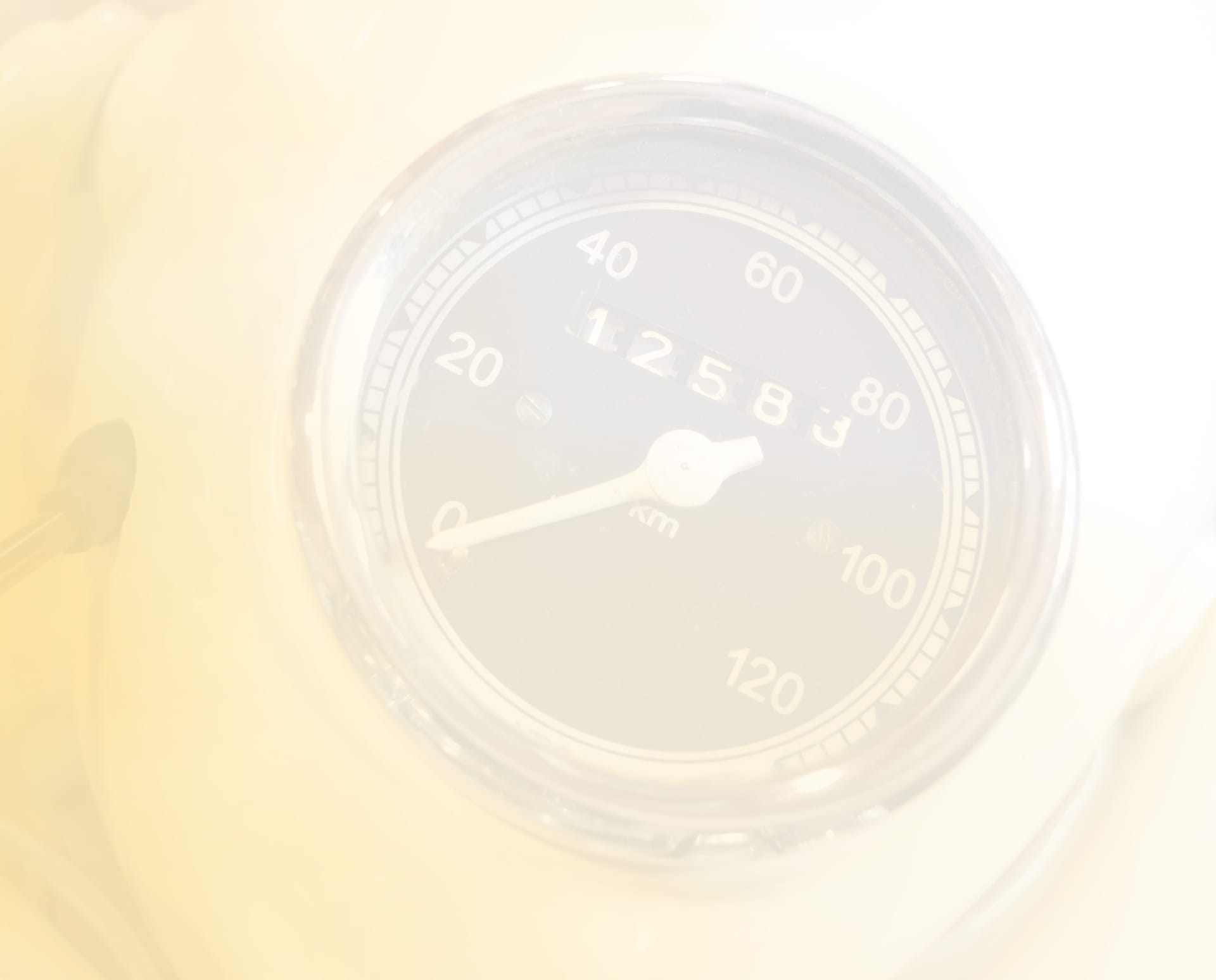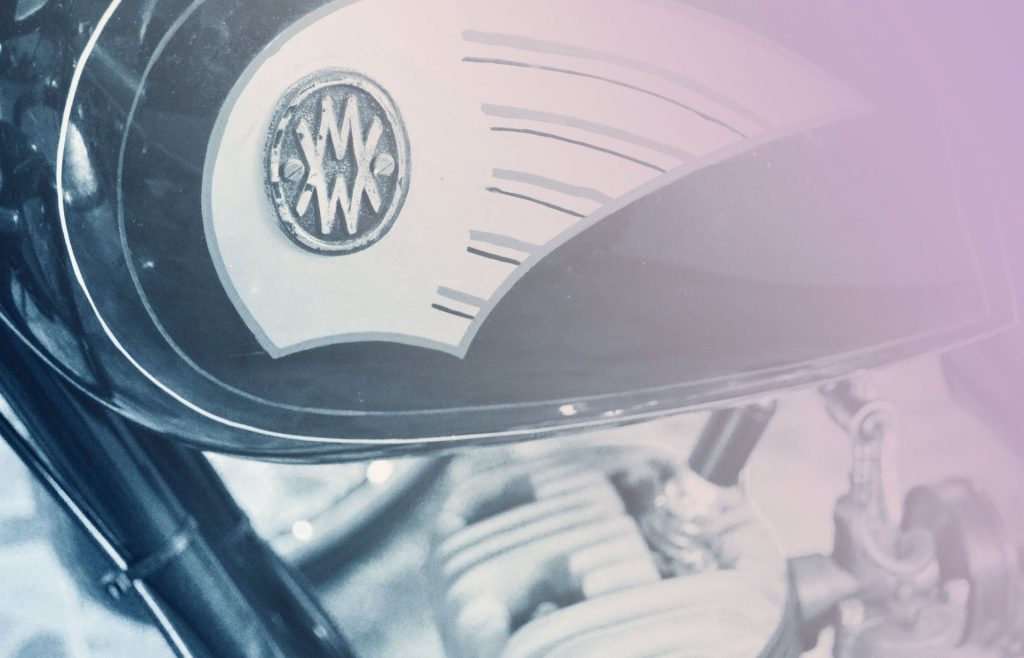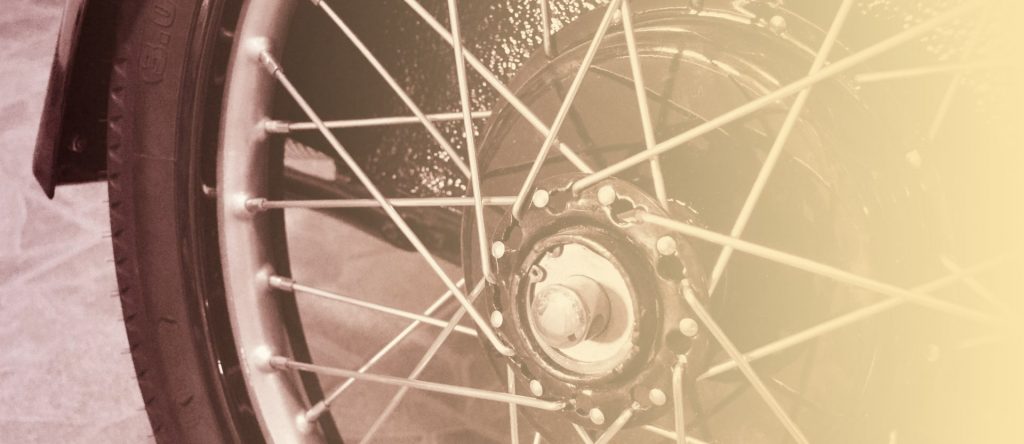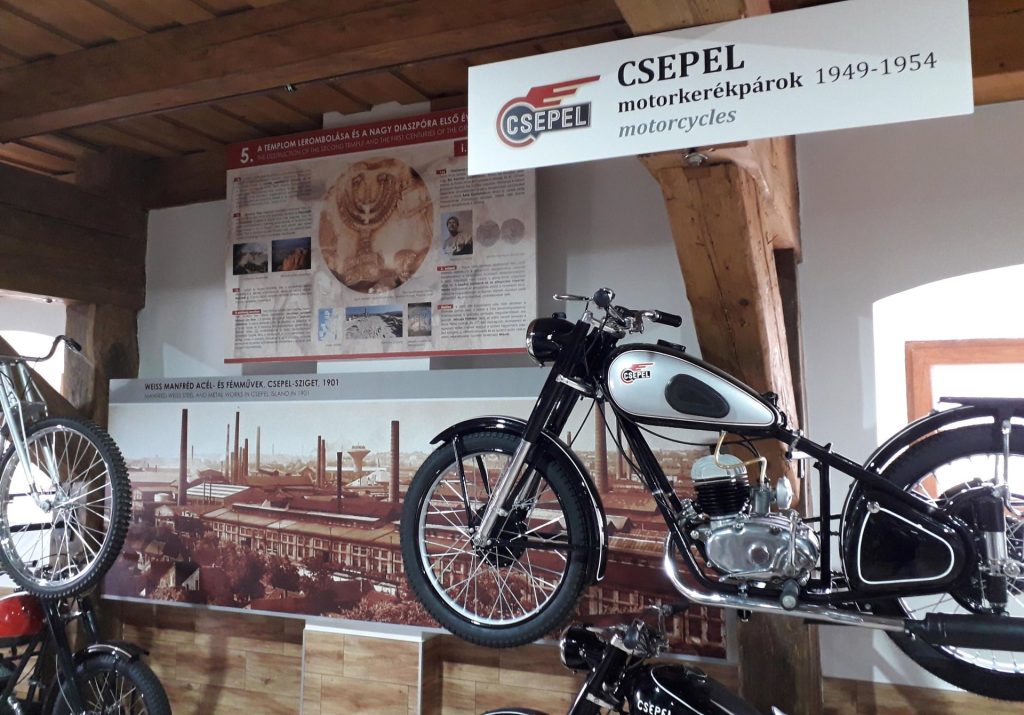
What can you see here?
What can you see here?
The permanent exhibition of the Manfred Weiss Visitor Center, located in an imposing location near the site of the former Battle of Isaszeg, aims to present artifacts created by the work of Manfréd Weiss, an industrialist of Jewish origin who significantly determined the economic and social development of Hungary.
In the lower visitor area there is a collection of motorcycles, which is unique even in the world. Nearly forty restored old motorcycles and sidecars (Szentesi, Jankovics, Danuvia, Csepel and unique products), as well as Pannonia Snowmobile, János Drapál’s speed motorcycle and other specialties await those interested in the technical achievements and beauties of the past.
One of the goals of the WMM Visitor Center is to acquaint domestic and foreign visitors with the special and unique history of the Jewish people. For this reason, an informative tableau presenting the history of the Jewish people can be found on the walls in honor of Manfred Weiss and many of our fellow Jews who promoted the prosperity of Hungary. These were supplemented by another series of tableaux (LIFEGUARDS), which show the activities of people who saved Jewish people during World War II.
Upstairs there is a cinema hall for thirty-two people, in which short films are presented, among others, about the work of Manfred Weiss, the Csepel factory, and the history of Judaism. There are also four ping-pong-sized Bible-themed models of the tabernacle, Solomon’s temple, Herod’s enlarged Second Temple (which stood in Jesus’ time), and a third temple based on the vision of the prophet Ezekiel. These scale architectural models can only be viewed here, unique in the world.
Surrounded by an imposing wrought-iron gate, fountain, pond with wild ducks and Cameroonian sheep grazing nearby, the building will soon feature a snack bar and souvenir shop.
Another curiosity of the WMM Visitor Center is that visiting groups of school and tourists – if they indicate this in advance – can take part in a factory tour on weekdays. This tour offers an exclusive glimpse into the aluminum plant located next to the Visitor Center, providing insight into the fascinating process of aluminum product manufacturing, from toolmaking to the finished, machined product. Visitors can also observe the operation of industrial robotics during the tour. (For more on the aluminium plant, see www.kokillaprec.hu)
In order to achieve an even more complete excursion experience, there are plans to organize a playground and a petting zoo for pets, jeep tours, family and children’s programs, concerts and smaller theatrical performances.
However, the guests of the Manfred Weiss Work Visitor Center will not be disappointed even if they plan a multi-day getaway to Isaszeg and its surroundings. But where is Isaszeg located, and what else can be seen here?
Isaszeg is located about 30 kilometers from Budapest, in the Gödöllő hills, along the Rákos stream. According to some, the name of the settlement, which has been functioning as a city for more than ten years, means: alder nook, alder corner, area covered with alder trees.
The settlement, which was also inhabited in the Bronze Age, was the favorite hunting ground of King Matthias and much later Franz Joseph I. In the 17th century, the plague epidemic decimated the population, and Germans settled in the area, which became the property of Maria Theresa’s confidant, Antal Grassalkovich at the beginning of the 18th century. In addition to the Germans, Polish, Slovak, Serbian and Hungarian families also arrived. Sándor Petőfi and Mór Jókai paid their respects several times in the village – the latter collected material for his novel The Sons of a Man with a Heart of Stone – but later Árpád Tóth also spent his holiday here, where he wrote his poem Evening Ray Wreath.
On April 6, 1849, the famous and victorious Battle of Isaszeg took place here, in which such prominent military generals as Lajos Aulich, János Damjanich, Artúr Görgey or György Klapka fought. The site of the battle is guarded by the Honvéd Memorial, and to the south, in Katonapallag, we can also find the Honvéd graves. Other sights include the Village Museum with its local history collection; the so-called “peaty” fishing lakes on the Rákos stream; On the way to Gödöllő, an arboretum containing trees not registered as native to Hungary; a Jewish cemetery at the foot of the Statue Mount (formerly known as the Jewish Mountain), which has not been used since World War II; in the north, the remains of an ancient defensive system known as the Csörsz Trench, etc.
Gödöllő lies 9 kilometers from Isaszeg, where one of Hungary largest baroque castles – such illustrious guests as Maria Theresa or Prince Windisch-Grätz – can be found, the Grassalkovich Castle. The victory of the Battle of Isaszeg was celebrated here by Lajos Kossuth, but it was also the coronation gift prepared by the Hungarian state for Franz Joseph I and Queen Elisabeth. The castle with its beautiful park now functions as both a museum and an event center.
The Manfred Weiss Work Visitor Center welcomes you:
- If you’re looking for a special time travel,
- if you want to see a collection of motorcycles that is unique in the world,
- if you were to study a series of ancient, biblical architectural models that are also unique in the world,
- if you want to know how aluminum objects are made,
- if you are interested in the history of a people whose sons have made a great contribution to Hungary economic, cultural, social and scientific advancement, or if you want to spend a few unforgettable hours in a picturesque environment, or if you want to visit a dazzling neighborhood for a few days.



